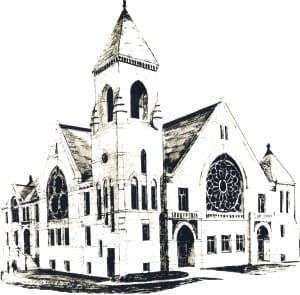A Bit of History from UMCMV – Musical History that is.
DID YOU KNOW… History of United Methodist Church of Mount Vernon
Music has always been an integral part of worship at the Mount Vernon United Methodist Church, not only through singing but also through instruments. For Methodists, an organ was integral to a worshipful service!
The first record of an organ in our church is in the 1887 minutes of the Board of Trustees. The minutes tell of the “authorization of the purchase of an organ, not to exceed $100.” However, it appears that no organs were available at or below that price because the Trustee minutes for 1891 indicated that “W. R. Blackwell was appointed to negotiate the purchase of a reed organ for $150.”
Early parishioners claimed there was an organ before that time “for Mrs. R. D. Parsons pumped one steadily for protracted meetings in 1876, and Clara Brackett had played for church before 1884”.
It is also recorded in later minutes that “the old organ was repaired.”
Apparently parishioners were not satisfied with the reed organ. A pipe organ was purchased in 1908 from the Hillgreen and Lane Company, and pipes were installed on the west side of the choir loft (Are they still there?)
The history goes on to mention “the notable service of Horace Alden Miller as organist, director of the choir, and guiding spirt through many years.” Older members of the congregation remembered him as a boy, playing the reed organ.
From the Trustee minutes: “After the installation of the pipe organ, his mechanical genius and basic understanding of the instrument kept the organ speaking on cold winter mornings and through many years on occasions grave or joyous, his organ echoed the mood of the hour. His spirit still lingers in the church in compositions and arrangements for both choir and organ which are given frequent place in the order of worship”.
NOTE: ( The major music scholarships that Cornell College awards each year are called the Horace Alden Miller scholarships; Miller was also a professor at the college. His home was the second stone house on Third Street. It is now owned and used by Cornell). —-Kay Graber , UMCMV Historian



